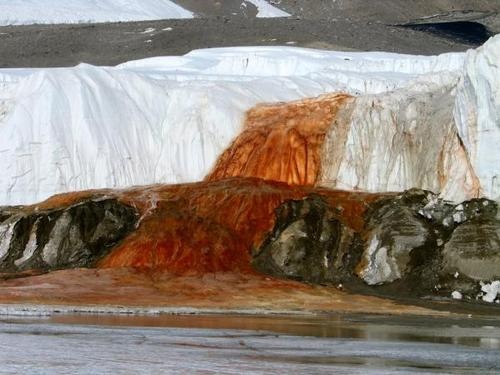From a crack in the Taylor Glacier in Antarctica flows an iron-rich water the color of blood. Scientists believe it comes from a lake frozen beneath the glacier 2 million years ago. And it’s packed with microbes.
This blood-red waterfall pours very slowly out of the Taylor Glacier in Antarctica’s McMurdo Dry Valleys. When geologists first discovered the frozen waterfall in 1911, they thought the red color came from algae, but its true nature turned out to be much more spectacular.
Roughly 2 million years ago, the Taylor Glacier sealed beneath it a small body of water which contained an ancient community of microbes. Trapped below a thick layer of ice, they have remained there ever since, isolated inside a natural time capsule. Evolving independently of the rest of the living world, these microbes exist without heat, light, or oxygen, and are essentially the definition of “primordial ooze.” The trapped lake has very high salinity and is rich in iron, which gives the waterfall its red color. A fissure in the glacier allows the subglacial lake to flow out, forming the falls without contaminating the ecosystem within.
The existence of the Blood Falls ecosystem shows that life is indeed possible in the most extreme of conditions. Life could perhaps exist on other planets with similar environments and similar bodies of frozen water – notably Mars and Jupiter’s moon Europa. But regardless of extraterrestrial life, the earth’s Blood Falls are a wonder to behold both visually, and scientifically.


 1
1  2
2 


